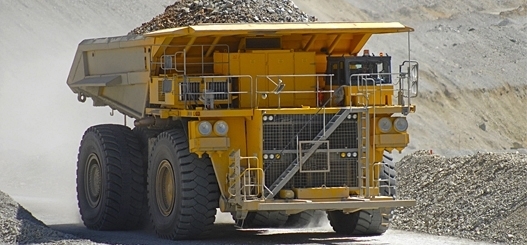

X-ray Bulk Mineralogy
Why Measure Minerals
X-ray diffraction directly probes the crystal structure, a 3-dimensional arrangement which tells how atoms are geometrically bound to each other. This arrangement determines the chemical and physical properties of a material and as such directly influence the value and the technical use of a material. As a simple example, the crystal structure is what makes the difference between, for instance the chemical element Carbon as the mineral diamond or the mineral graphite. While the one is an exceptionally hard insulator, which beautifully scatters light, the other is a dark, soft, good electric conductor.
Minerals are natural resources and geo-materials. Industrial minerals are directly used for many applications, as construction materials, to create pigments, paints, cosmetics, as fillers in plastics or paper, as a resource for the chemical industry, to produce food, feed, glassware, pottery, refractories, ceramics and many more.
Minerals can be fuels themselves ore play a major role during the exploration and exploitation of coal or oil and gas resources. Minerals help in understanding slag and ash formation during the combustion of fossil fuels, but they are also important markers in the Oil & Gas upstream and downstream segments.
Minerals form rocks, which may host ores – our natural source of metals like Iron, Copper, Gold, Silver, Platinum, Nickel and many others. Knowing the minerals assay is key to understand the host rock properties like hardness but also how to extract the metal from the surrounding rock. It tells how many explosives are needed for blasting in the mine, what mill to use for comminution of the rock, what consumables, how much energy. It tells about solubility of the ore, what chemicals to use and how many. It also tells about waste rock and deleterious minerals that may disturb the process of metal extraction or even render it uneconomic. Where mineralogy shines and pays back quickly is the processing side of metals mining.
Altogether, knowledge of mineralogy adds value to all steps of the earth´s materials processing chain. XRD is found everywhere: in exploration, mine planning and operation, processing, quality control and assessment of waste products.
Benefits of XRD
X-ray powder diffraction (XRD) is the most direct and efficient way to quantitatively examine minerals. XRD applies to any solid crystalline or amorphous material with only little sample preparation needed. The complete quantitative X-ray mineralogy is obtained from simultaneous measurement of all minerals present in the specimen. Using proprietary Bruker LYNXEYE detector technology this only takes a few minutes.
- A strength of XRD is its sensitivity to fine particle fraction, which is time consuming to analyze with scanning techniques.
- The XRD sample preparation is quick, simple and can be fully automated. It does not require vacuum or curing and polishing epoxy blocks. A fine powder of about 10 micrometer particle size is ideal for XRD.
- Only XRD can distinguish polymorphs (e.g. TiO2 in the form of rutile or anatase) and polytypes (e.g. Muscovite 1M or 2M1).
- XRD provides the total mineralogy including carbonates, hydroxides and clays in ore. Volatile components such as CO2, H2O, and OH do not get lost in preparation. The loss on ignition, LOI, that is typical to other techniques makes the back-calulation of the total mineralogy from chemical analysis difficult to impossible.
While XRD has some unique properties, it is complementary with other Bruker technologies.
- Element filtering for improved species identification and results reconciliation from chemical analysis (XRF, CGA or OES).
- Minerals assays from XRD can be matched with Scanning Electron Microscopy (AMICS) or scanning XRF (M4 TORNADO AMICS). While scanning methods may have advantages in finding trace amounts, XRD represents the bulk including the fines and slime fraction.
- Near Infrared Spectroscopy (NIR) is widely used in the minerals industry for analyzing clays and other soft minerals in combination with XRD, which has advantages in looking at the hard rock-forming minerals.
Mineral Fingerprinting and Quantification
Over 40.000 different mineral species are known to the commonly available databases. The DIFFRAC.EVA software identifies within seconds the different minerals by their unique fingerprint pattern, searching several databases in parallel. XRPD distinguishes between minerals having the same or very similar chemistry. The detection limit is in the sub-% or micro-gram range.
Cluster analysis in DIFFRAC.EVA is a tool that adds a major benefit to exploration work. Using cluster analysis large data-sets containing thousands of measurements of various types are grouped and the most representative members are identified for further - fully quantitative - inspection. Without needing expert knowledge materials of different origin are easily sorted and outliers detected.
Full quantitative mineralogy is obtained from calibration based DQUANT- or standard-less TOPAS-analysis. DQUANT is your tool for quantification at lowest limits of detection using reference materials. TOPAS Rietveld analysis allows easy quantification based on the well-known and tabulated mineral structures.


